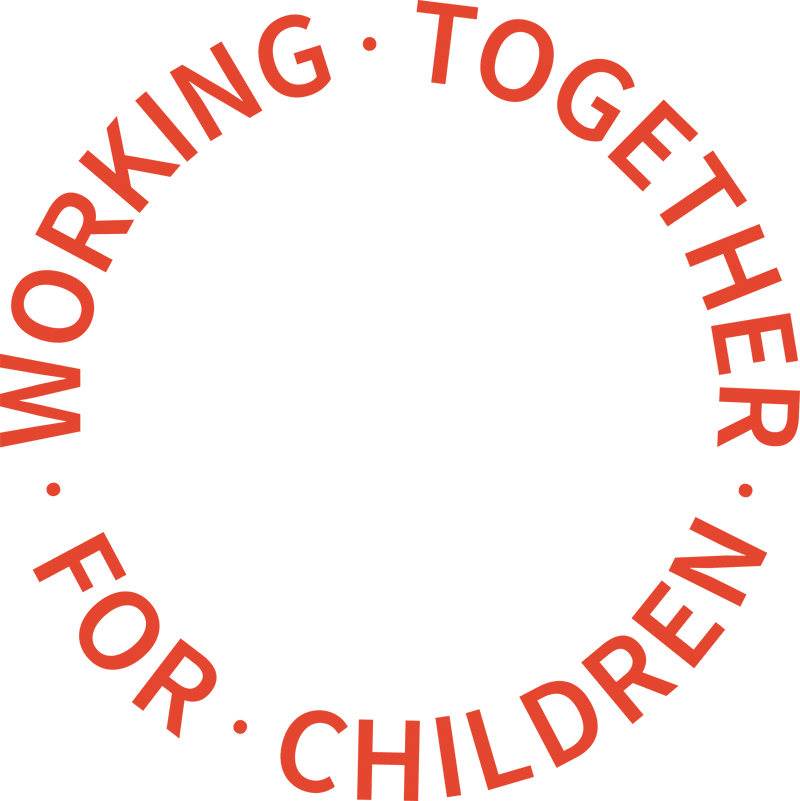Police and local authorities are failing to keep pace with the changing nature of child sexual exploitation by networks, the Independent Inquiry into Child Sexual Abuse has warned.

Many children are being raped or sexually assaulted repeatedly over a period of months or even years as children are being sexually exploited by networks in all parts of England and Wales in the ‘most degrading and destructive ways’.
Chair to the Inquiry Professor Alexis Jay said: “The sexual exploitation of children by networks is not a rare phenomenon confined to a small number of areas with high-profile criminal cases. It is a crime which involves the sexual abuse of children in the most degrading and destructive ways, by multiple perpetrators.
“We found extensive failures by local authorities and police forces in the ways in which they tackled this sexual abuse. There appeared to be a flawed assumption that child sexual exploitation was on the wane, however it has become even more of a hidden problem and increasingly underestimated when only linked to other forms of criminal behaviour such as county lines,” she added.
Less known now about CSE than in 2015
The report focused on St Helens, Tower Hamlets, Swansea, Durham, Bristol and Warwickshire, six case study areas that have not already been the subject of well-publicised investigations of child sexual exploitation by networks
Child sexual exploitation has been a designated strategic policing priority since 2015, giving it the same significance as terrorism and serious organised crime. However, the Inquiry’s findings suggest that less is now known and understood about the prevalence of CSE than was the case prior to 2015.
The prevalence of child sexual exploitation could not be gleaned from criminal justice or children’s social care data, due in part to changes in the recording and tracking systems used by police and local authorities.
The child criminal exploitation model covers all aspects of child exploitation, such as trafficking or county lines, including drug offending. The Inquiry found that the rationale for such a model appears to be to discourage a ‘silo’ mentality in relation to all aspects of child exploitation. However, the Inquiry’s report warns that this comes at the cost of making child sexual exploitation even more of a hidden problem and increasingly underestimated.
Therefore, the data presented in the six case study areas were confused and confusing: there were inconsistencies in each case study area, with unexplained trends and in some cases large, unexplained variations in the figures. As such, the data indicated that cases of child sexual exploitation were falling in two case study areas.
Coerced, manipulated or deceived
The report said: “It is hard to reconcile the idea that child sexual exploitation by networks is now less prevalent with the widely reported ‘explosion’ in online child sexual abuse, including exploitation. As the Inquiry has heard in other investigations, some of the worst examples include where children – including babies and infants – are live streamed for money, sometimes being sexually abused at the direction of the paying perpetrator. It is more important than ever that the relevant agencies in every area should have a specific focus on what is known about child sexual exploitation, distinct from child criminal exploitation, whether or not the agencies adopt the child criminal exploitation model.”
Furthermore, the Inquiry was particularly struck by the reporting that there were no known or reported organised networks in two of the case study areas.
The report highlights that a unique feature of child sexual exploitation by networks that is children are coerced, manipulated or deceived into sexual activity with multiple abusers.
Terminology has evolved around definitions of child sexual exploitation, including the concept of ‘exchange’ and whether it is necessary to be present in an individual case of sexual abuse in order for it to meet the criteria for child sexual exploitation. ‘Exchange’ involves the child receiving something that they need or want, which might suggest that children have a choice about their own exploitation.
The Inquiry considers the idea of ‘exchange’ to be an unhelpful distraction.
“Instead, the overriding imperative ought to be to identify all children who are harmed by sexual exploitation or at heightened vulnerability to it, to act decisively to protect them and to bring offenders to justice,” said the report.
Deficiencies in approach to managing risk
Distinctive professional language around child sexual exploitation has developed over many years, and describes children being ‘at risk’ despite clear evidence of actual harm having occurred.
There were children habitually described as being ‘at risk’ of child sexual exploitation and in some cases were not given the support they needed because they were not categorised as already having experienced sexual exploitation.
“These were significant deficiencies in the overall approach to identifying, assessing and managing risk in some case study areas,” said the report.
Furthermore, a case was highlighted in concerning the thresholds applied for children to receive various forms of services and support. The Inquiry was told that a child would not be placed in the category of high risk requiring multi-agency intervention if the perpetrator was unknown.
The Inquiry warns that a failure to recognise the nature of risk and harm has widespread consequences for sexually exploited children as over time, it downgrades the importance and seriousness of these cases in the minds of those responsible for protecting children and minimises the opportunities to investigate, disrupt and prosecute offenders.
Captive victims
Two clear indicators of heightened vulnerability to child sexual exploitation are being in residential care and having a disability, although it is likely that there are many more. There is a national shortage of suitable residential care placements for children who are at risk of or have experienced child sexual exploitation, the report warns, and poor selection of these placements can result in escalating harm, including to the existing children in a distant care home.
Disabled children, who are often socially isolated, have a lack of accessible information and may find it harder to disclose abuse. Perpetrators may deliberately target disabled children who in some instances would have no means of communication and therefore these children should be seen as potential ‘captive victims’ who need skilled and well-trained intervention.
Going missing from home and school is a recognised feature of child sexual exploitation, yet often responses were inadequate.
Male victims of sexual exploitation were targeted by improved efforts at identification. Social media and dating apps were regularly used by perpetrators to groom boys and young men. In some areas more tailored services were available for children from ethnic minority groups and LGBTQ+ children who experienced sexual exploitation.
The Children’s Commissioner and the Home Affairs Committee have supported problem profiles in order to develop comprehensive responses to child sexual exploitation since 2013. However, several profiles contained incomplete evidence about the prevalence of child sexual exploitation, and there was often a lack of information about perpetrator groups and some were based on inadequate data.
None of the areas examined kept data on the ethnicity of victims and alleged perpetrators despite many of the high-profile child sexual exploitation prosecutions having involved groups of men from minority ethnic communities.
Missing from home
The report highlights various examples of how children were exploited:
CS-A371 was taken into foster care when she was 10 years old, supplied with drugs at age 11 and was self-harming by 12. Adult men took her to flats and sexually exploited her. Police became involved when she was 17 and several prosecutions followed. She describes being demeaned by defence barristers in court who accused her of being racist and “a slag” and said repeatedly that she had wanted sex with the perpetrators and had lied about her age.
CS-A373 told the Inquiry that she experienced domestic violence as a young child and felt rejected at home. She repeatedly went missing from home but was found by the police and returned to her mother. When she was 12, an adult in the group she was associating with gave her cannabis, forced her to perform oral sex and raped her. At the age of 13, she was hospitalised after being given drugs by a local man, then placed in care outside her local area. At the age of 15, she met another adult male who gave her alcohol and cannabis before raping her. She reported this to the police and he was given a caution for having sex with a child under 16. She received no support or counselling and took an overdose. She repeatedly went missing and was returned home without any enquiry about why she was running away. She felt neither police nor social services properly assessed the risks she faced.
CS-A372 was first raped in 2007 at the age of 12 by a 16-year-old boy who was prosecuted and convicted of rape. By the time she was 13, her home life was increasingly violent and chaotic. She told us her father threatened to ‘prostitute’ her and she started running away from home. Her case was closed by children’s social care on several occasions, which her records showed was because staff thought she was “putting herself at risk”.3 CS-A372 described being forced to perform oral sex on more than 20 adult men at the age of 14. This was also filmed. A number of men were charged but the charges were later dropped.
The report makes a number of recommendations:
- Strengthening of the response of the criminal justice system by the government amending the Sentencing Act 2020 to provide a mandatory aggravating factor in sentencing those convicted of offences relating to the sexual exploitation of children.
- The government should publish an enhanced version of its Child Exploitation Disruption Toolkit as soon as possible.
- The Department for Education and the Welsh Government should update guidance on child sexual exploitation. This should include the identification and response to child sexual exploitation perpetrated by networks or groups and improve the categorisation of risk and harm by local authorities and other institutions. The toolkit and guidance should specify that the core element of the definition of child sexual exploitation is that a child was controlled, coerced, manipulated or deceived into sexual activity.
- The Department for Education should ban the placement in semi-independent and independent settings of children aged 16 and 17 who have experienced, or are at heightened risk of experiencing, sexual exploitation. We recommend that police forces and local authorities in England and Wales must collect specific data – disaggregated by sex, ethnicity and disability – on all cases of known or suspected child sexual exploitation, including by networks.


